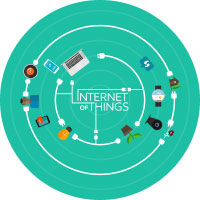
by Xiamen Four-Faith Communication Technology Co., Ltd
Smart electricity distribution network monitoring system is the use of electronic information and communication technology to detect the distribution network’s short circuits and single-phase ground faults.
Smart electricity distribution network monitoring system is the use of electronic information and communication technology to detect the distribution network’s short circuits and single-phase ground faults. It enables real-time monitoring, threshold warnings, fault session detection and sending out the fault message. This allows technical personnel to arrive on-site and fix the relevant problems quickly. This system can reduce the reliance on technician experience to identify faults, increase equipment stability and management efficiency.
Widely used in cities with overhead electricity lines, cable lines, oil fields, switchgears and other boxed equipments.
The system consists of the fault indicator (acquisition unit), collecting unit and main station server.
When there is a fault in the electricity line, the LED light will flash immediately and the alarm will sound. At the same time the fault information is transmitted to the main station server. Once the fault information is received, in combination with the GIS system, the fault location and time will be sent out to a technician who will then rush on-site to fix the problem.
When the main station server receives the fault information from the terminal, it will perform a topology analysis, calculating, together with the GIS system to display the fault sites graphically, and clearly displaying the line status.1. Powered by electricity line: 10A+ current from the electricity line would be enough for the fault line indicator, extra battery power is not needed in this case.
CDMA EvDO Rev. A » GSM/GPRS